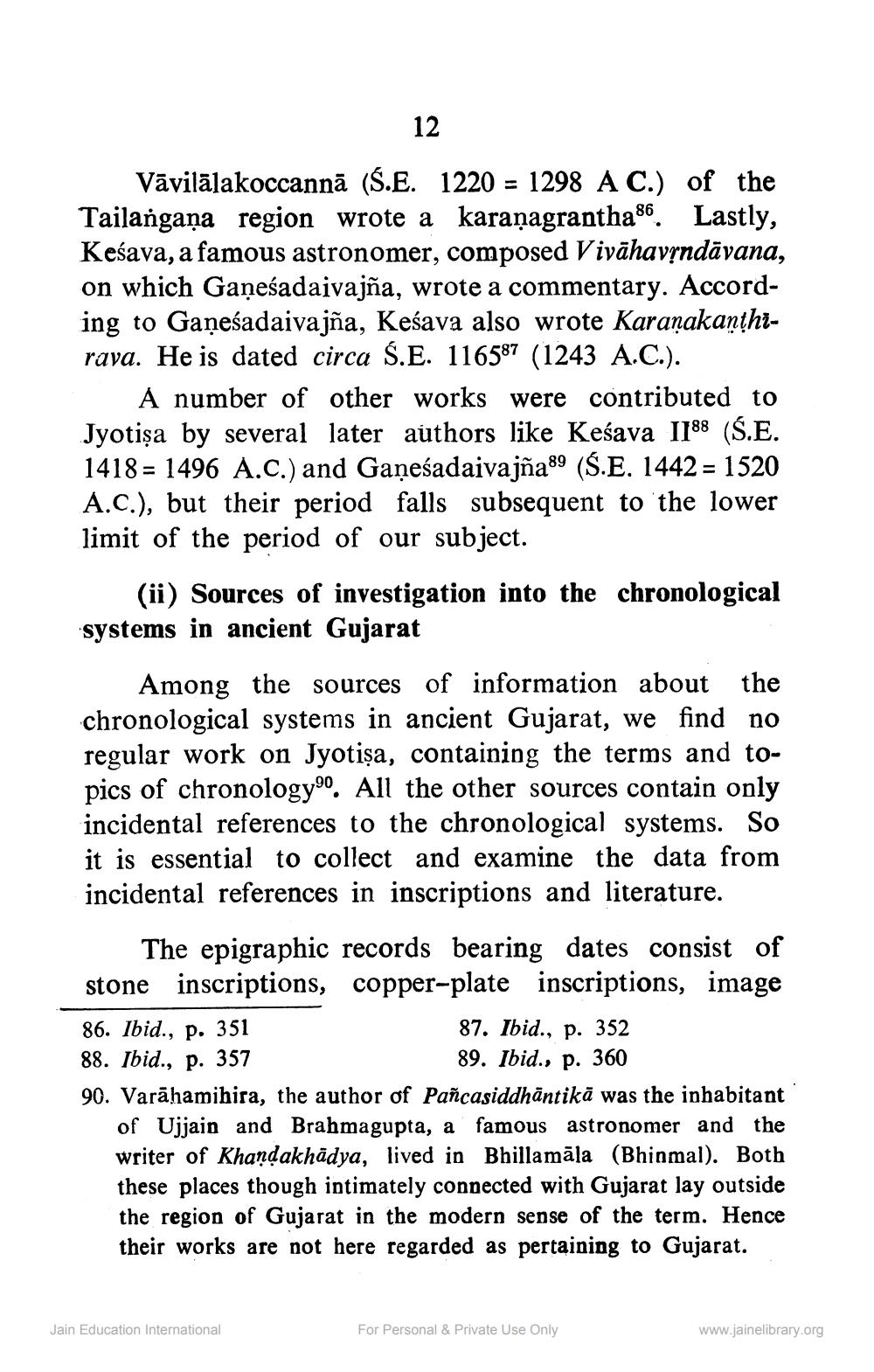________________
12 Vāvilālakoccannā (Ś.E. 1220 = 1298 A C.) of the Tailangana region wrote a karaṇagrantha86. Lastly, Keśava, a famous astronomer, composed Vivāhavındāvana, on which Gaṇeśadaivajña, wrote a commentary. According to Gaņeśadaivajña, Keśava also wrote Karanakanthirava. He is dated circa Ś.E. 116587 (1243 A.C.).
A number of other works were contributed to Jyotişa by several later authors like Keśava 1188 (S.E. 1418 = 1496 A.C.) and Ganesadaivajña89 (Ś.E. 1442 = 1520 A.C.), but their period falls subsequent to the lower limit of the period of our subject.
(ii) Sources of investigation into the chronological systems in ancient Gujarat
Among the sources of information about the chronological systems in ancient Gujarat, we find no regular work on Jyotişa, containing the terms and topics of chronology". All the other sources contain only incidental references to the chronological systems. So it is essential to collect and examine the data from incidental references in inscriptions and literature.
The epigraphic records bearing dates consist of stone inscriptions, copper-plate inscriptions, image 86. Ibid., p. 351
87. Ibid., p. 352 88. Ibid., p. 357
89. Ibid., p. 360 90. Varāhamihira, the author of Pañcasiddhāntikā was the inhabitant
Ujjain and Brahmagupta, a famous astronomer and the writer of Khandakhädya, lived in Bhillamāla (Bhinmal). Both these places though intimately connected with Gujarat lay outside the region of Gujarat in the modern sense of the term. Hence their works are not here regarded as pertaining to Gujarat.
Jain Education International
For Personal & Private Use Only
www.jainelibrary.org




